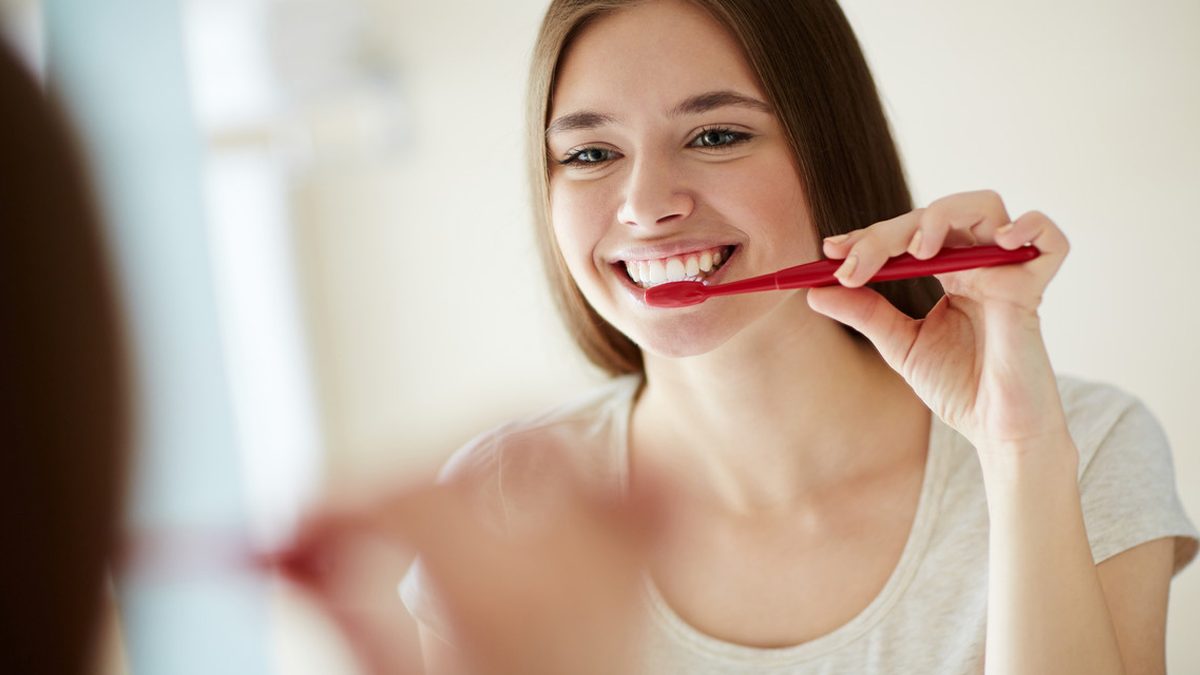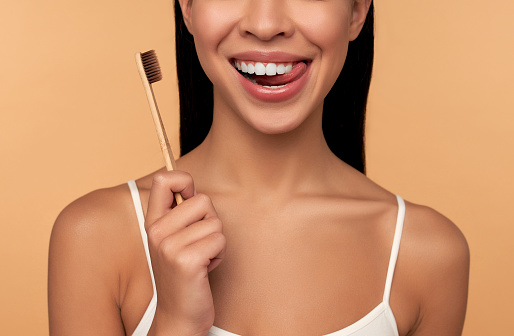Have you ever wondered if you’re brushing your teeth the right way? Even if you brush and floss twice a day, your technique could be off. Brushing incorrectly can leave behind debris and increase your chance of cavities.


Have you ever wondered if you’re brushing your teeth the right way? Even if you brush and floss twice a day, your technique could be off. Brushing incorrectly can leave behind debris and increase your chance of cavities.

A new kind of toothpaste has come onto the scene, challenging fluoride’s #1 seat at the cavity-defense table. But does hydroxyapatite (HAp) really work to protect and strengthen teeth? Is it safe? Should you use it?
In this article, you’ll learn how HAp toothpaste works, why I recommend it over fluoride for optimal oral health, the benefits (including whiter teeth!), and which brands to try.
If you’re done with fluoride and ready to move onto something better and fluoride-free, this is the toothpaste for you.
(Two quick notes: One, in the studies I share within this article, toothpaste is called a “dentifrice” and cavities/tooth decay are referred to as “dental caries.” Second, when I compare HAp to fluoride, I’m referring to topical use only. As of right now, there is no alternative for fluoride in water, as HAp is unstable in water.)
So, let’s start with the burning question: What exactly is hydroxyapatite, and why is it in toothpaste?
Hydroxyapatite (HAp), in its natural form, is a form of calcium that makes up 97% of your tooth enamel and 70% of the dentin of your teeth. The rest of your enamel is actually composed of water, collagen, and other proteins.
The chemical formula for hydroxyapatite is Ca5(PO4)3(OH).
Fun fact: hydroxyapatite is also the major (60%) component of bones. In addition to toothpaste, it’s been used in osteopathic research to help strengthen bone material. It also shows promise for orthodontic restorations.
The high HAp concentration in tooth enamel is the reason it’s so strong.
The main draw of hydroxyapatite in toothpaste is that it helps to remineralize (rebuild) tooth structure without any known side effects.
Tooth decay grows and destroys teeth when the remineralization of your teeth outweighs demineralization. Both of these processes happen all the time in your mouth and are impacted by mouth breathing, your diet, your oral hygiene, and ultimately, your oral microbiome.
he reason most dentists make a big deal about fluoride is because it’s one of the only substances on earth that can help rebuild your teeth. They think it’s better than calcium, as it’s more resistant to acid and less likely to dissolve in the presence of low pH conditions.
I explain the significant differences between fluoride and HAp later in this article, but the biggest problem with fluoride is that it’s toxic in large doses and associated with increased risks of at least 11 medical conditions.
For the most part, the biggest fluoride issues have to do with ingesting it via water, as most people spit out their toothpaste. If your child swallows a little bit of toothpaste, it’s usually not going to be a long-term problem.
Fortunately, hydroxyapatite is biocompatible with your teeth — because it’s literally the same material as the majority of your tooth structure!
Not only is it biocompatible, but it’s totally non-toxic — no Poison Control warning needed — and strengthens teeth. In fact, it’s not just compatible with your body — it’s literally “biomimetic,” which means your body recognizes it as familiar structure that belongs there.
The best way to use hydroxyapatite toothpaste to prevent and reverse cavities is to leave it on your teeth after brushing. Translation: Don’t rinse your mouth after brushing with HAp.
Because your teeth recognize this compound, they absorb and uptake hydroxyapatite down to the root. This is most beneficial when we’re talking about tooth decay because HAp can reach down into the furthest area of decay to rebuild enamel on any tooth surface.
The way your teeth react to hydroxyapatite toothpaste also makes them more resistant to plaque buildup and “acid attacks”/enamel erosion that leads to tooth decay. It can even make them look “glossier.”

When was the last time you replaced your toothbrush? We throw out expired foods, restock vitamins and supplements, and replace our beauty products often, but when it comes to health and beauty, it’s our dental hygiene that doesn’t get as much attention or thought as other areas of our regimen. However, there are important rules and tips you should follow for maintaining optimal dental health.